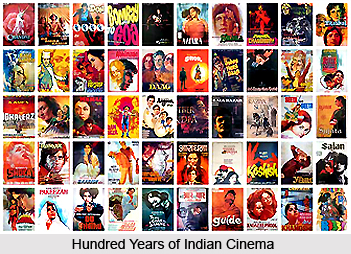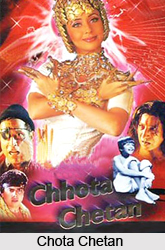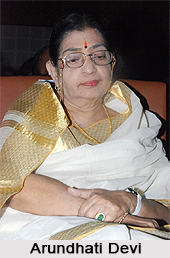Hundred Years of Indian Cinema celebrates the spirit of Indian Cinema and its history. Indian Cinema is the celebration of the expression of the self and the cinematic moments where every reel counts.
The genre of Silent Films marked the apotheosis of film sojourn. Directed by Dadasaheb Phalke they charted the beginning of the nation`s longstanding affair with cinema. It was almost 100 years later that filmmaker Shivendra Singh Dungarpur conformed to tell the tale of a man who was not a film maker by birth or by chance but boarded the cinematic train and courted films his entire life. His documentary feature, Celluloid Man, celebrates PK Nair, the founder of National Film Archive of India, a man Indian cinema owes more than it has ever acknowledged.
If Phalke was the father of Indian Cinema, Irani was the father of the talkie. The talkies changed the face of Indian cinema. Apart from looks, the actors not only needed a commanding voice but also singing skills, as music became a defining element in Indian cinema. The year also marked the beginning of the Talkie era in South Indian films. The first talkie films in Bengali (Jumai Shasthi), Telugu (Bhakta Prahlad) and Tamil (Kalidas) were released in the same year.
The exhibitors or the pioneer film maker realized they were unleashing a mass entertainment medium that would hold millions in sway for the next hundred years. The French might have introduced the concept of moving images, but little did anyone know that India would one day become the largest film industry in the world. It`s a miracle that Indian cinema has withstood the test of time despite the vast cultural differences in the past 100 years.
Indian cinema conjures an identity that is very unique and unmatched. From the moments of black and white movies enamoured silence as expression to 3D the journey has been long but the movie essence remains to thrill. Although the internet downloads and television engages in a secret mission cannibalize the theatrical revenues of Indian films, the lure of the 35 mm is something else altogether. It was Phalke who introduced India to world cinema at a time when working in films was taboo. After the success of his film `Raja Harishchandra`, several filmmakers in Bombay and Madras began making silent films. By the mid 1920s, Madras had become the epicenter for all film related activities. Raghupathi Venkaiah Naidu, SS Vasan, AV Meiyappan set up production houses in Madras to shoot Telugu and Tamil films.
 The Middle Years of Hundred Years
The Middle Years of Hundred Years
The forties was a tumultuous decade; the first half was ravaged by war and the second saw drastic political changes all over the world. In the middle of the Second World War in 1945 came `Kismet` starring Ashok Kumar which became one of the biggest hits in the history of Indian cinema. It had some bold themes - the first anti-hero and an unmarried pregnancy. It clearly showed that the filmmakers of the era were bolder than the times in which they were living in. A close relationship between epic consciousness and the art of cinema was established. It was against this backdrop that filmmakers like V. Shantaram, Bimal Roy, Raj Kapoor and Mehboob Khan made their films. In the meantime, the film industry had made rapid strides in the South, where Tamil, Telugu and Kannada films were taking South India by storm. By the late 1940s, films were being made in various Indian languages with religion being the dominant theme. 1940s to late 1950s was also the golden era of music. Shankar Jaikishan, O.P. Nayyar, Madan Mohan, C. Ramchandra, Salil Chowdhury, Naushad, S D Burman all had their distinctive style. Each vied with the other to produce some of the most unforgettable melodies India has ever known.
50s and 60s were considered as the Golden Age of Indian cinema. Filmmakers like Satyajit Ray, Ritwik Ghatak, Guru Dutt, Bimal Roy, Mehboob Khan, K Asif, Raj Kapoor, KV Reddy, L V Prasad and Ramu Kariat made waves in their respective film industries and they went on to make classics like Pather Panchali, Madhumati, Do Bheega Zameen, Shree 420, Awaara, Pyasa, Mother India, Mughal E Azam, Mayabazar and Chemmeen among many other films. In the south, N.T. Rama Rao, M. G. Ramachandran, Sivaji Ganesan, Rajkumar, Prem Nazir dominated the film industry for more than three decades before making way for the next generation of actors like Rajinikanth, Kamal Haasan, Mammootty, Mohanlal, Chiranjeevi and Balakrishna.
The 70s completely changed the way films were made, especially in Hindi film industry. Changing social norms and changing economies influenced movies and the companies that made them. The narrative style changed. The story structure changed. Characters changed. Content changed. Masala films were the demand of the time. The genre promised instant attraction and had great entertainment value. It was the age of the angry young man and Amitabh Bachchan rose to prominence thanks to the success of Sholay, Zanjeer and Deewar. While Dev Anand, Rajesh Khanna, Jitendra and Dharmendra continued to bask in the glory of back to back hits, the actresses were not far behind. Right from the time of Savitri, Vyjayanthi Mala, Nargis, Waheeda Rehman and Sharmila Tagore to Sridevi, Rekha, Smita Patil, Hema Malini, several actresses became heartthrobs of the nation.
While Indian commercial cinema enjoyed popularity among movie-goers, Indian art cinema did not go unnoticed. Adoor Gopalakrishnan, Ritwik Ghatak, Aravindan, Satyajit Ray, Shyam Benegal, Shaji Karun and several other art film directors were making movies that gave India international fame and glory.
Modern era of Hundred Years
The eighties saw the advent of women film makers such as Vijaya Mehta (`Rao Saheb`), Aparna Sen (`36- Chouwringhee Lane`, `Parama`), Sai Pranjpye (`Chashme Baddoor`, `Katha`, `Sparsh`), Kalpana Lazmi (`Ek Pal`), Prema Karanth (`Phaniamma`) and Meera Nair (`Salaam Bombay`). It was also the decade when sultry siren Rekha wooed audiences with her stunning performance in `Umrao Jaan` in 1981.
And then in 90`s, it was a mixed genre of romantic, thrillers, action and comedy films. A stark upgrade can be seen on the canvas as technology gifted the industry Dolby digital sound effects, advanced special effects, choreography and international appeal. The development brought about investments from the corporate sector along with finer scripts and performances. It was time to shift focus to aesthetic appeal. And stars like ShahRukh Khan, Rajnikanth, Madhuri Dixit, Salman Khan, Aamir Khan, Chiranjeevi, Juhi Chawla and Hrithik Roshan began to explore ways to use new techniques to enrich Indian cinema with their performances.
In recent years, Hindi cinema has undergone a massive change due to the emergence of new age filmmakers like Anurag Kashyap, Rajkumar Hirani, Dibakar Banerjee and Vishal Bhardwaj. Of late, Tamil and Marathi cinema has witnessed similar changes with several new filmmakers coming forth to cater to a niche audience.
As the world has become a global village, the Indian film industry has reached out further to international audiences. Apart from regular screenings at major international film festivals, the overseas market contributes a sizeable chunk to Bollywood`s box office collections. Regular foreign Investments made by major global studios such as 20th Century Fox, Sony Pictures, and Warner Bros put a stamp of confirmation that Bollywood has etched itself on the global podium.
To celebrate 100 years of cinema in India, the Government of India, in cooperation with the film industry, has proposed to line up a host of activities between May 3, 2012 and May 3, 2013. It has also proposed to present a tableau of 100 years of Indian Cinema at the Republic Day parade next year. The Information and Broadcasting Ministry has also instituted a centenary award which will be given to a path- breaking film every year at the International Film Festival of India (IFFI) in Goa. The first centenary award would be given at the IFFI 2012 which will be held in Goa in November this year.
Indian cinema, despite all its peculiarities, has been a reflection of the socio-economic, political and cultural changes that took place in the country. Here`s hoping that Indian movies continue to entertain us the way they`ve been doing since 10 decades.






